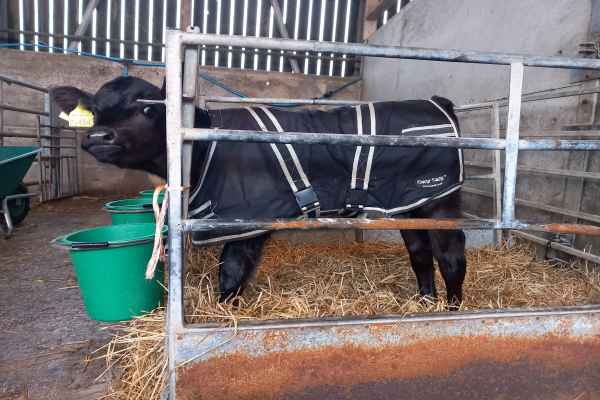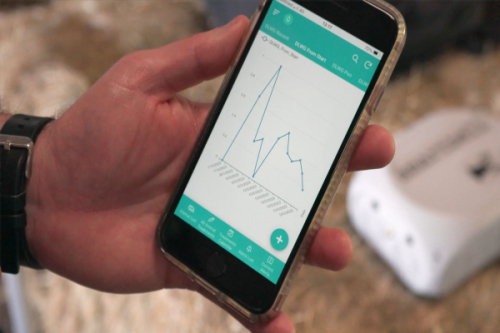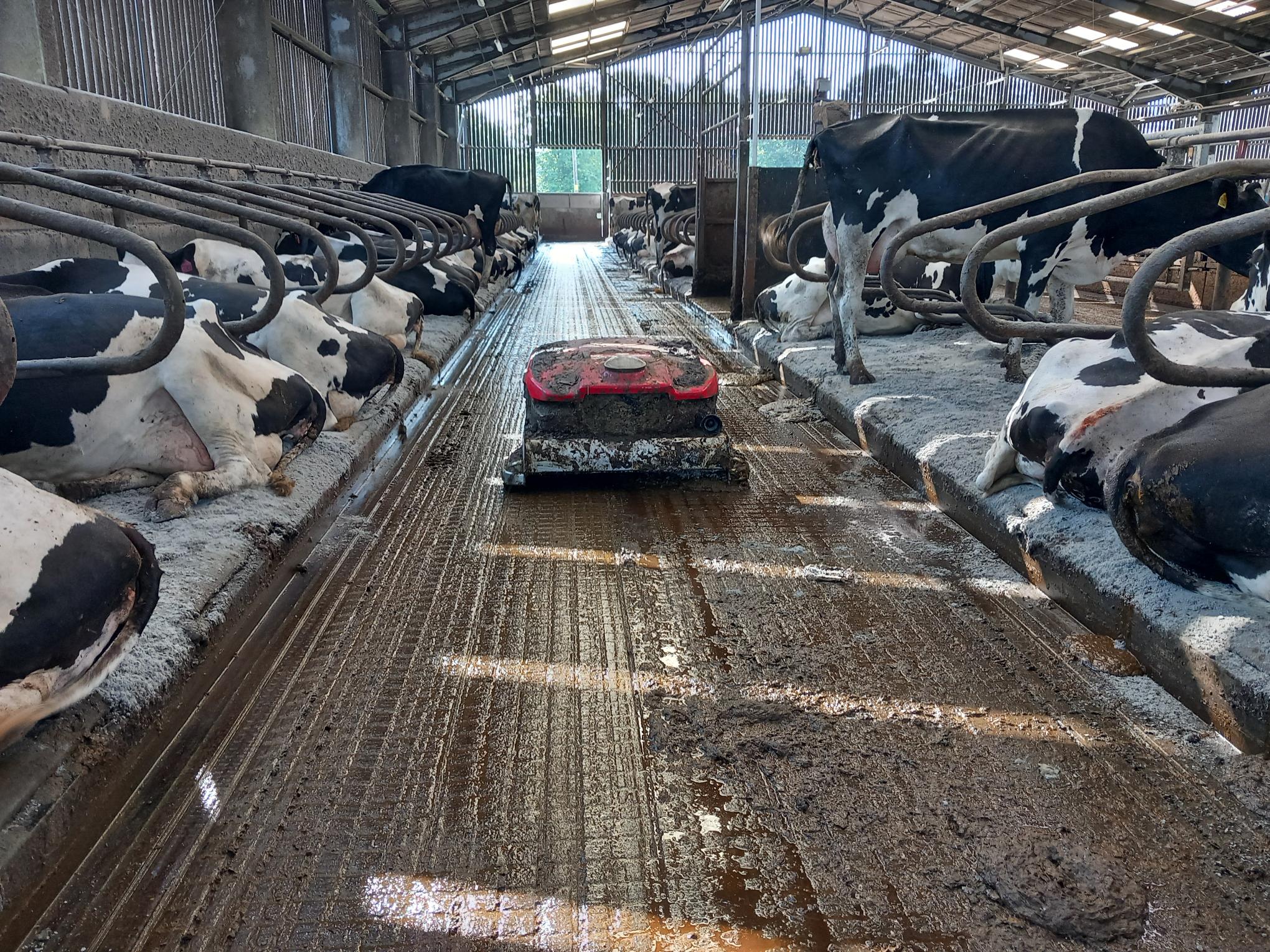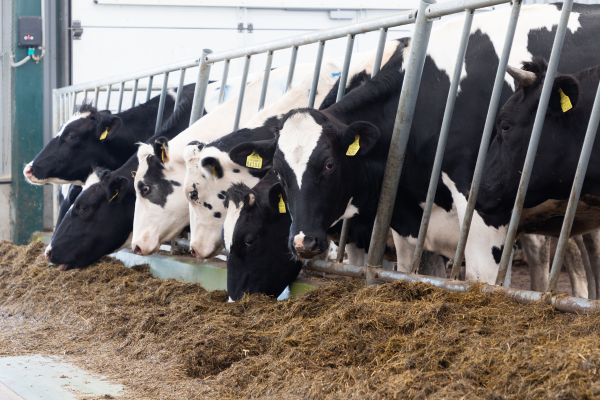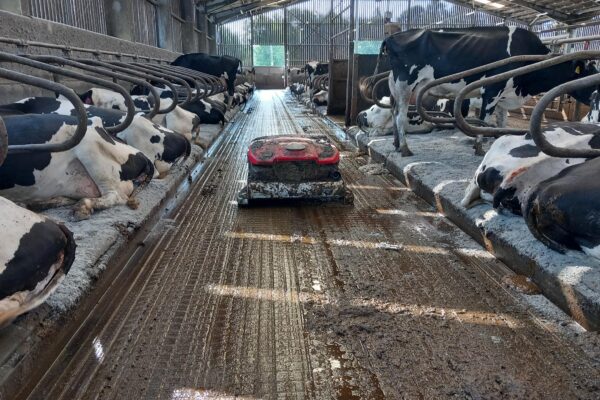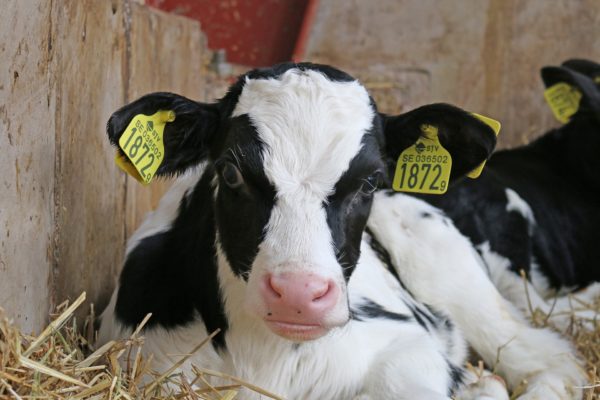A Guide to Pre-Weaning Nutrition of Dairy Beef Calves
25 August 2025Dairy beef calves are typically purchased anywhere from 10 days to three weeks of age and so will need to be reared on calf milk replacer (CMR) until weaning at a minimum of eight weeks of age. Good nutrition during the first few weeks of life is critical to support high growth rates and build a strong immune system. Here we discuss the nutritional management of milk feeding calves, managing the weaning period to minimise any growth check and ensuring a smooth transition on to the grower ration.
Sourcing calves
Calves undergo significant stress when moved from the farm of birth to the rearer unit. Transport, mixing of unfamiliar calves, a new housing environment and a change of diet can all negatively impact growth performance and immunity. In order to minimise disease risks, try to source calves from as few farms as possible. Ask the source farm about their colostrum management – do calves receive colostrum quickly, how much (ideally 10% of body weight in the first feed) and is it quality tested?
Ask about vaccination status and any other routine treatments. Knowing the health status of the source herd is important so that you are aware of potential disease risks that calves could have been exposed to. Also take into consideration the disease risks at the rearer unit and have preventative measures in place to protect the health of incoming calves. Make sure you have a biosecurity protocol in place for newly purchased calves, based on veterinary advice.
Lastly, find out what milk replacer calves have been fed and the type of creep feed offered. If nutrition at the rearer farm can be kept as close as possible to what calves received on the source farm, the better calves will adapt to the stresses of change.
If possible, visually inspect calves before purchase and ensure they are:
- Bright-eyed and alert, with no sign of discharge from the eyes, nose or mouth.
- In good condition, with shiny and supple coats.
- Healthy, with no evidence of scour and have a clean, dry naval with no sign of infection.
- Of good conformation and well-grown (at target weight for age).
Calf milk replacer (CMR) choice
There are a number of CMR products available, and these can vary in their specification (protein and fat content) and quality of ingredients.
Ideally look for a CMR with a minimum specification of 18% oil and 22% protein. The lower the oil content the lower the energy. Higher protein powders are available but tend to be fed to dairy heifers aiming for high rates of lean tissue growth and will be more expensive.
The best source of protein to look out for on a label are milk sources: either whey or skim. Other protein sources include vegetable proteins such as hydrolysed wheat gluten, potato protein, pea protein and soya-based proteins. Milk proteins should be first on the ingredient list, with vegetable protein sources further down on the list as they are slightly less digestible than milk proteins. The fibre content of the CMR should be less than 0.15%. The higher the fibre, the greater the inclusion of vegetable protein sources, which is likely to result in poorer growth performance.
Milk feeding rates
In the first few weeks of life, dairy beef calves that are bucket fed twice a day should be fed a minimum of six litres of milk in two-three litre feeds. Feeding must come down to what is practical, and if feeding twice a day, 3.5 litres is the maximum that can be safely fed in one feed. However, the natural behaviour of a calf is to suckle its dam little and often and so calves could, in theory, consume as much as 12 litres of milk/day, highlighting that bucket fed systems greatly restrict milk intake. Higher volumes of milk can be offered with automatic feeding systems (or by bucket feeding three times a day, however, this is likely to be impractical in terms of time/labour cost). Therefore, it is important that a high-quality creep feed is also available ad lib to achieve good growth rates.
Recommended mixing rates of CMR vary but tend to be in the range of 12.5% to 15% inclusion, with 15% being more common. A 15% inclusion is made up of 150g of CMR in 850ml of water.
A growth rate of 0.8kg/day is a good minimum target to aim for, although this may vary depending on the breed and whether the calves are destined for finishing or as a replacement breeding animal. To achieve this growth rate, calves should be consuming six litres/day or 900g of CMR powder (at 15% inclusion). Calves fed any less will not meet this minimum target liveweight gain, especially in the colder winter months, where more energy is required to keep the calf warm. Very simply, the more CMR the calf is fed then the better the growth rate and the stronger its immune system, with lower susceptibility to disease. It is illegal to feed calves milk once a day if they are under 28 days of age.
Predicted calf growth performance can be assessed using the Nottingham University Calf Milk Replacer Calculator: https://herdhealth.shinyapps.io/toolkit/
Table 1 shows the predicted growth rates from the calculator, based on a 50kg calf fed on a 22% protein, 20% oil CMR at different inclusion rates and litres fed (assuming an environmental temperature of 15°C and no intake of creep feed).
Table 1. Predicted calf growth rate depending on CMR inclusion rate and litres fed.
Environmental temperature can have a significant impact and if average daily temperature is just 5°C, then the above growth rates would be approximately 140g/head/day less compared to a temperature of 15°C.
Weaning management
Weaning dairy beef calves off milk should be done gradually to reduce the post-weaning growth check. The transition away from a milk-based diet to a forage and concentrate-based diet requires careful management to minimise digestive upsets, stress and maintain good growth rates.
Calves should not be weaned abruptly i.e. where milk provision is stopped suddenly. This is likely to result in a much bigger growth check due to the calf’s inability to eat sufficient creep feed to make up for the loss of nutrition from milk. Instead, gradually wean calves off milk - step weaning is where the volume of milk replacer fed is reduced over several days (usually over 7-14 days) before the calf is completely weaned (see table 2 below for an example). This transition period will help to encourage increasing intakes of creep feed as milk intake falls, leading to better rumen development and continued good growth rates post-weaning. Overall, gradual weaning is significantly less stressful to the calf compared to abrupt weaning.
Table 2. An example of milk feeding rates when weaning calves at 8 weeks of age.
Creep feed
Creep feed should be provided while calves are reared on milk. This needs to be of high quality and good palatability, with a minimum of 18% protein (in the fresh weight as declared on a feed label) and a minimum metabolisable energy content of 12MJ/kg DM. The feed can be in the form of a compound pellet or nut, a textured blend or coarse mix. Blends that are too mealy (dusty) will result in lower intakes.
Calves will eat very little creep feed in the first three weeks of life, as the majority of their nutrition will be coming from milk. However, it is still important that calves have access to creep feed on arrival at the rearer unit, and providing a small amount on a daily basis will keep it fresh and encourage early intake. Dry feeds will aid rumen development more quickly than a milk only diet, allowing greater efficiency of digestion and nutrient absorption.
Ideally calves should be consuming 1.5kg of creep feed for at least three consecutive days before being fully weaned. The minimum recommended age at weaning is 8 weeks and at this point calves should have doubled their birth weight, for example a 40kg birthweight calf should be 80kg at weaning.
Forage
Calves should not be fed fermented forages (i.e. grass silage or cereal wholecrops) until the rumen is fully developed, which is usually complete at around 5-6 months of age. For pre-weaned calves, provision of ad lib chopped straw is essential for good creep feed intake, to develop the muscular wall of the rumen and for normal papillae growth that line the rumen wall for nutrient absorption. Straw also helps the transition at weaning from milk to a solid feed diet. Do not rely on straw from bedding alone and provide straw in racks. Calves offered forage during the milk feeding phase have been shown to have higher intakes of creep feed. Feeding dry forage also encourages rumination and saliva production, which helps to buffer rumen pH, benefiting early rumen development and nutrient absorption.
An alternative to straw is to offer hay. However, good quality hay may restrict creep feed intake, as calves will tend to eat more hay compared to straw, so it is best to offer high NDF (>65%), clean, low nutritional value hay. Intake of forage should be no more than 5% of total dry matter intake, so on average around 0.1-0.2kg/calf/day, but this will vary with calf size and how well the forage is chopped (aim for around 1.5-2 inches).
Water
Adequate water provision is important for rumen development. While there is water in CMR, this is not sufficient for the calf, or for rumen development. Milk bypasses the rumen via the oesophageal groove reflex and is digested in the abomasum. However, the rumen requires water for the growth and development of beneficial bacteria and efficient digestion of creep feed. The greater the intake of water, the greater the intake of creep feed and the better rumen develop.
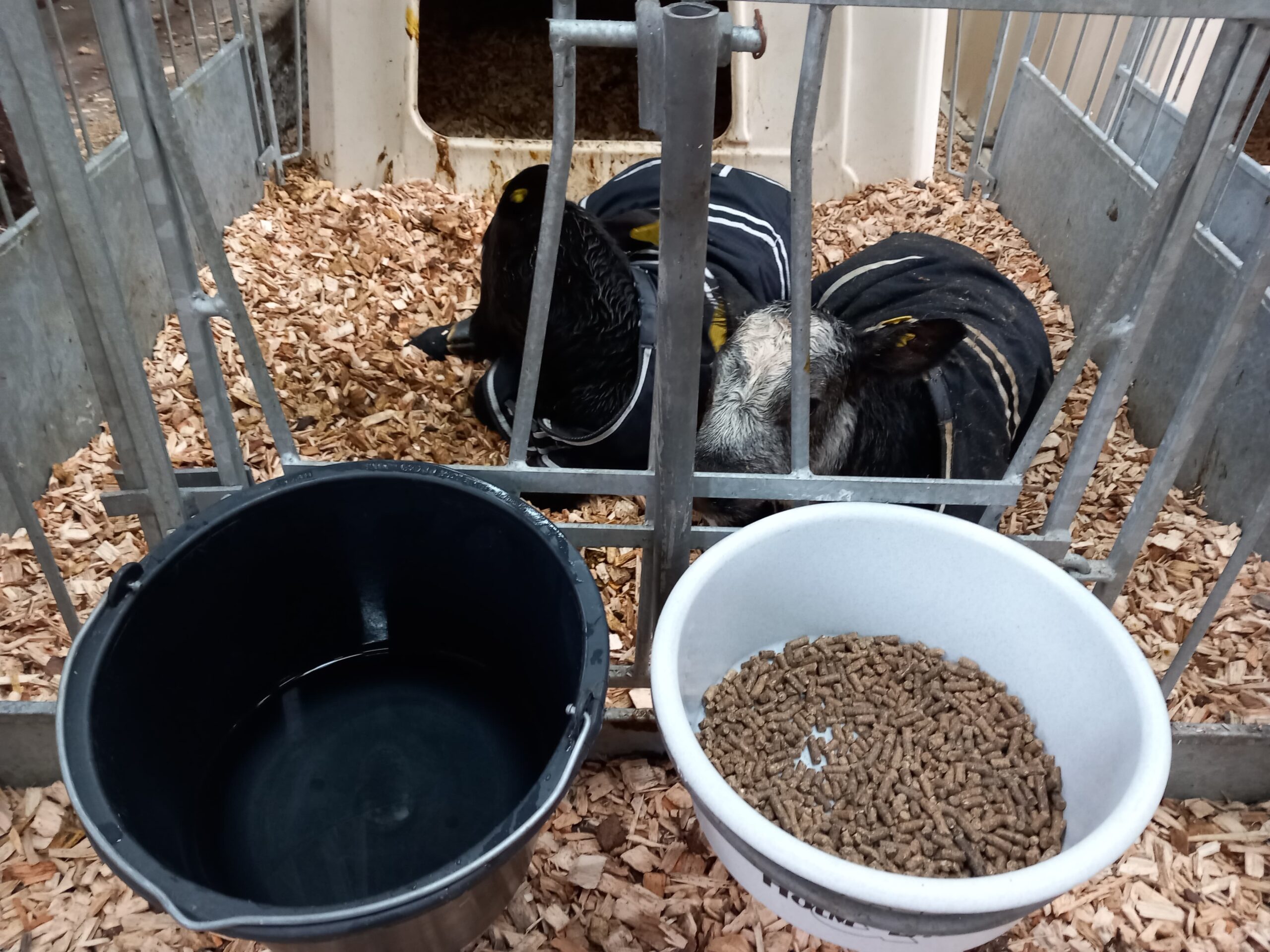
Post-weaning nutrition and management
Once the calf is fully weaned, it is recommended to keep the creep feed, forage, calf groupings and the housing environment the same for two weeks before any further changes are made. Avoid restraint or management procedures such as vaccination, disbudding or castration during this time. Stress at weaning can compromise the immune system for at least two weeks post-weaning, make calves more susceptible to disease, particularly pneumonia, as well as compromising growth rate.
Gradually introduce the rearer feed, whether that is a compound, blend or home-mix into the creep feed, building up the proportion of the new feed over a few days. Also introduce new forage gradually, whether it is grass silage, wholecrop or hay. Calves tend to perform best when reared on straw and concentrates up to five to six months of age as the rumen is not so efficient at digesting fermented forages before it is fully developed. If fermented forages are to be introduced earlier (minimum 3 months of age), dry forages with a lower potential acid loading are best, and depending on forage quality, calves should still be fed in the region of 2-3kg of concentrate. Do not rely on bedding to provide forage as calves are not as likely to consume enough and run the risk of acidosis, reduced feed intake and poorer growth rates.
If calves are weaned in the spring with the aim of grazing them, wait until they are at least three months of age before turnout. Continue to provide some concentrate feeding in the region of 2kg/head/day. Calves will take around two to three weeks to learn how to graze properly, and during this time, grass intakes are likely to be below what they are physically capable of consuming. Supplementation with concentrate is recommended during this transition stage to help maintain growth rates, as well as during periods of grass scarcity or where quality is poor.
In the dairy industry there has been a move towards later weaning, with many dairy heifer calves now weaned closer to 10 weeks of age. The benefits of later weaning include:
- Health and performance benefits.
- Reduces the dip in daily liveweight gain.
- Permeability of gastrointestinal tract decreases as calves get older, so they are more able to fight disease and there is less risk of scour.
- Improved rumen fermentation activity.
The decision of when to wean should be based on a number of factors but one of the most important is whether the calf is eating the desired amount of creep feed so that its rumen is sufficiently developed. Target intake is 1.5kg at 8 weeks of age and nearer 3kg at 12 weeks of age.
Other questions to ask are, is the calf:
- Meeting its weight-for-age target, based on its breed and/or the rearing system?
- At the minimum age for the rearing system?
- Able to compete within a group?
- Healthy and bright?
If the answer to any of the above is no, then delay weaning.
Summary
Successfully rearing beef calves out of the dairy herd is a combination of good nutritional management and providing calves with clean, dry and well-ventilated housing and a low stress environment. Nutrition will have a significant impact on growth, and the more milk fed the better (remember no more than 3.5 litres in a single feed), so aim to feed a minimum of 6 litres of milk at a 15% CMR inclusion if targeting a growth rate of 0.8kg/day.
Good rumen development will be supported by providing a quality creep feed along with ad lib clean, fresh straw and water. Gradual weaning is best, ideally over a 7–14 day period to encourage good creep feed intake both pre- and post-weaning for optimal growth performance.
Keep stress to a minimum, with as little change as possible to the calves’ nutrition and environment in the two weeks post-weaning, before gradually transitioning onto the rearer diet. For further information on rearing dairy beef calves past the post-weaning stage, see this guide.
Lorna MacPherson, SAC Consulting
Sign up to the FAS newsletter
Receive updates on news, events and publications from Scotland’s Farm Advisory Service

